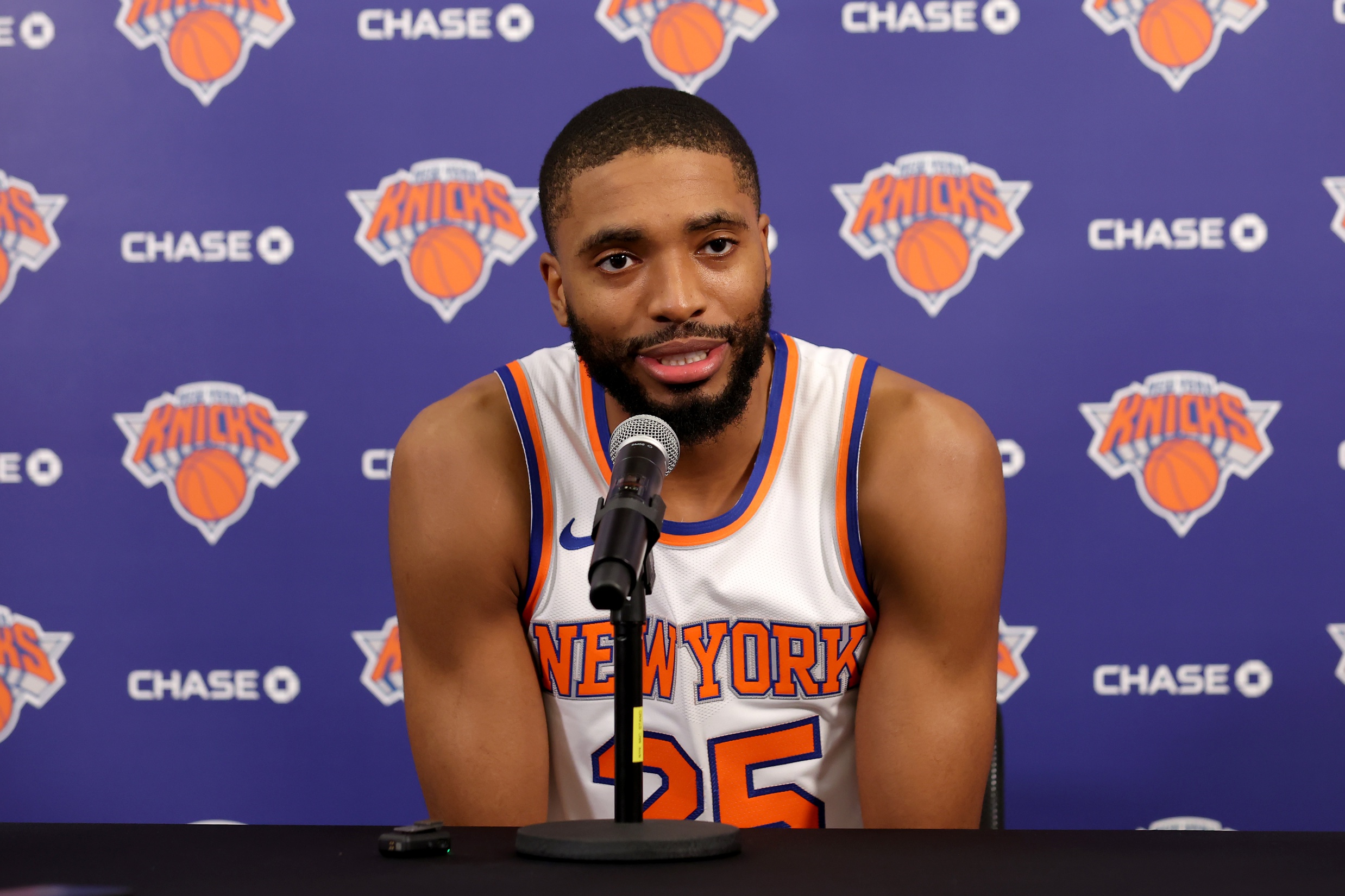The NBA’s “six-month rule” is a contractual stipulation that affects players who have been traded while on an existing extension. The rule states that any player who has been recently traded must wait six months before the team can renegotiate the player’s contract. As of October 1, 2024, the six-month rule has become particularly relevant for several players, including Mikal Bridges, who face critical decisions regarding their financial futures.
NBA Business: The NBA’s Six-Month Rule That’s Delaying Mikal Bridges Extension
How the Rule Affects Mikal Bridges
Bridges, currently with the New York Knicks, finds himself at a crossroads because of the six-month rule. After his 2024 trade, Bridges can now consider a two-year contract extension. However, this is much less lucrative than waiting until July 2025, when he becomes eligible for a four-year extension with significantly higher annual salary increases.
For Bridges, the rule creates a strategic dilemma. If he extends now, he would be limited to a deal of around $61.2 million over two years. However, by waiting until 2025, he could command a much larger deal of around $156 million over four years, a stark difference in terms of financial security and long-term earning potential. This trade-off between security and maximizing his earning power adds complexity to his decision.
Other Players Affected by the Six-Month Rule
Mikal Bridges is not alone in navigating the six-month rule. Players traded while under contract extensions must also decide whether to extend their contracts under current limitations or wait for a more lucrative long-term deal. This rule forces players to balance the immediate security of an extension with the potential of earning a significantly larger contract in the near future.
For example, players like Malcolm Brogdon, Deni Avdija, Bojan Bogdanovic and Harrison Barnes, may also face similar strategic considerations as the six-month window approaches. These players, like Bridges, must weigh the financial benefits of waiting for a more substantial extension against the risk of potential injury or changes in market dynamics.
Implications of the Rule for Teams and Players
The six-month rule has significant implications for both teams and players. For players, it limits their flexibility when deciding on extensions following a trade, effectively putting a cap on how much they can earn in the short term. While it provides a safety net in the form of a two-year extension, it may also compel players to wait in hopes of securing a better financial future.
For teams, the rule can help manage salary cap concerns in the short term but also poses challenges. Teams like the Knicks, which traded several assets to acquire Bridges, might prefer for their stars to extend earlier to avoid future salary cap constraints. However, if a player like Bridges opts to wait, it could delay the team’s ability to make additional roster moves.
Why the Rule Exists
The NBA introduced the six-month rule to maintain competitive balance and prevent teams from circumventing salary cap rules through trades. Before the rule, there was a potential loophole where a team could trade for a player and immediately extend him on favorable terms, which could disrupt the financial equilibrium between teams.
By enforcing the six-month waiting period, the NBA ensures that trades do not lead to immediate extensions that could tilt competitive balance in favor of wealthier franchises or those with more flexible salary cap situations. This rule encourages long-term planning and forces both players and teams to carefully evaluate their financial and roster-building strategies.
The Last Word
The six-month rule may not be the most well-known aspect of NBA contracts, but it plays a pivotal role in shaping the decisions of both players and teams. For players like Mikal Bridges, the rule represents a significant decision point between financial security and long-term earning potential. As we move further into the 2024-25 season, it will be interesting to see how many players in similar situations navigate this complex landscape.






